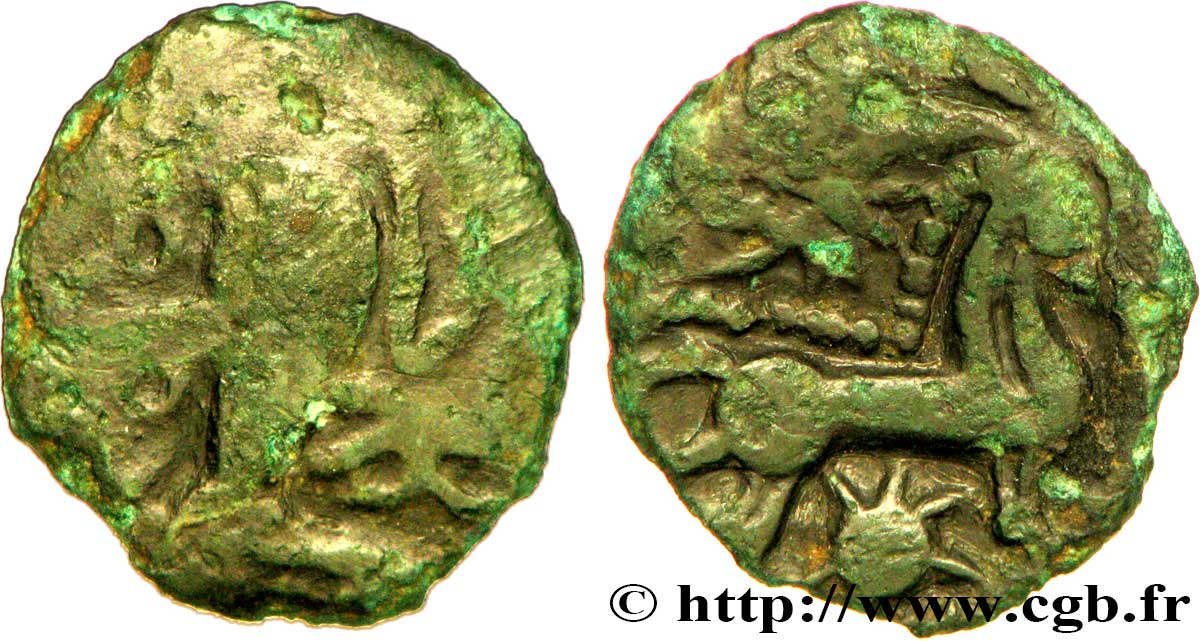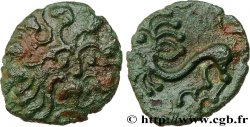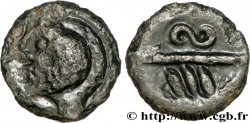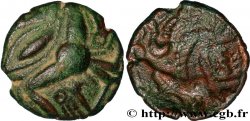Obverse
Obverse legend : ANÉPIGRAPHE.
Obverse description : Restes du personnage courant à gauche, la tête tournée à droite ; de nombreux petits ornements dans le champ.
Reverse
Reverse legend : ANÉPIGRAPHE.
Reverse description : Cheval à droite, encadré par deux astres rayonnant.
Historical background
GALLIA BELGICA - BELLOVACI (Area of Beauvais)
(2nd - 1st century BC)
The Bellovaques, people of Belgian Gaul, occupied the current department of Oise. Their neighbors were the Parisii, the Véliocasses, the Calètes, the Ambiens and the Suessions.. Caesar (BG. VII. 59) considers the Bellovaci as the "most valiant people in all of Gaul". Before the Gallic Wars, the Bellovaci had been allies of the Aedui. In 57 BC. -VS. , they were the architects of the uprising of the Belgian peoples, provided a contingent of sixty thousand warriors to the coalition, but were defeated and found refuge on their oppidum of Bratuspantium. In 52 BC. -VS. , they had promised a contingent of ten thousand men for the relief army. They recanted, claiming to fight the Romans alone. Finally, at the prayer of Commius, they gave two thousand men to the coalition. The following year, in 51 BC. -VS. , they took for the last time the head of a revolt of the Belgian people. Corréos, Bellovaque chief, led the sedition in order to fight the Romans with the Atrébates, the Ambiens, the Aulerques Éburovices, the Calètes and the Véliocasses. With the atrebate Commios, Correos met the Roman armies on the borders of the Bellovaci and Suession countries.. Correos was killed, which put an end to hostilities definitively.. The main oppidum of the Bellovaci was Bratuspantium which is difficult to identify with certainty with the Roman city of Caesaromagus (Beauvais). Caesar. (BG. II, 4, 5, 10, 13, 14; V, 46; VII, 59, 75, 90; viii, 6, 7, 12, 14-17, 20-23, 38). Strabo (G. IV, 3-5). Pliny (HN. IV, 106). Ptolemy (G. II, 9). Kruta: 68, 351.








 Report a mistake
Report a mistake Print the page
Print the page Share my selection
Share my selection Ask a question
Ask a question Consign / sell
Consign / sell
 Full data
Full data









